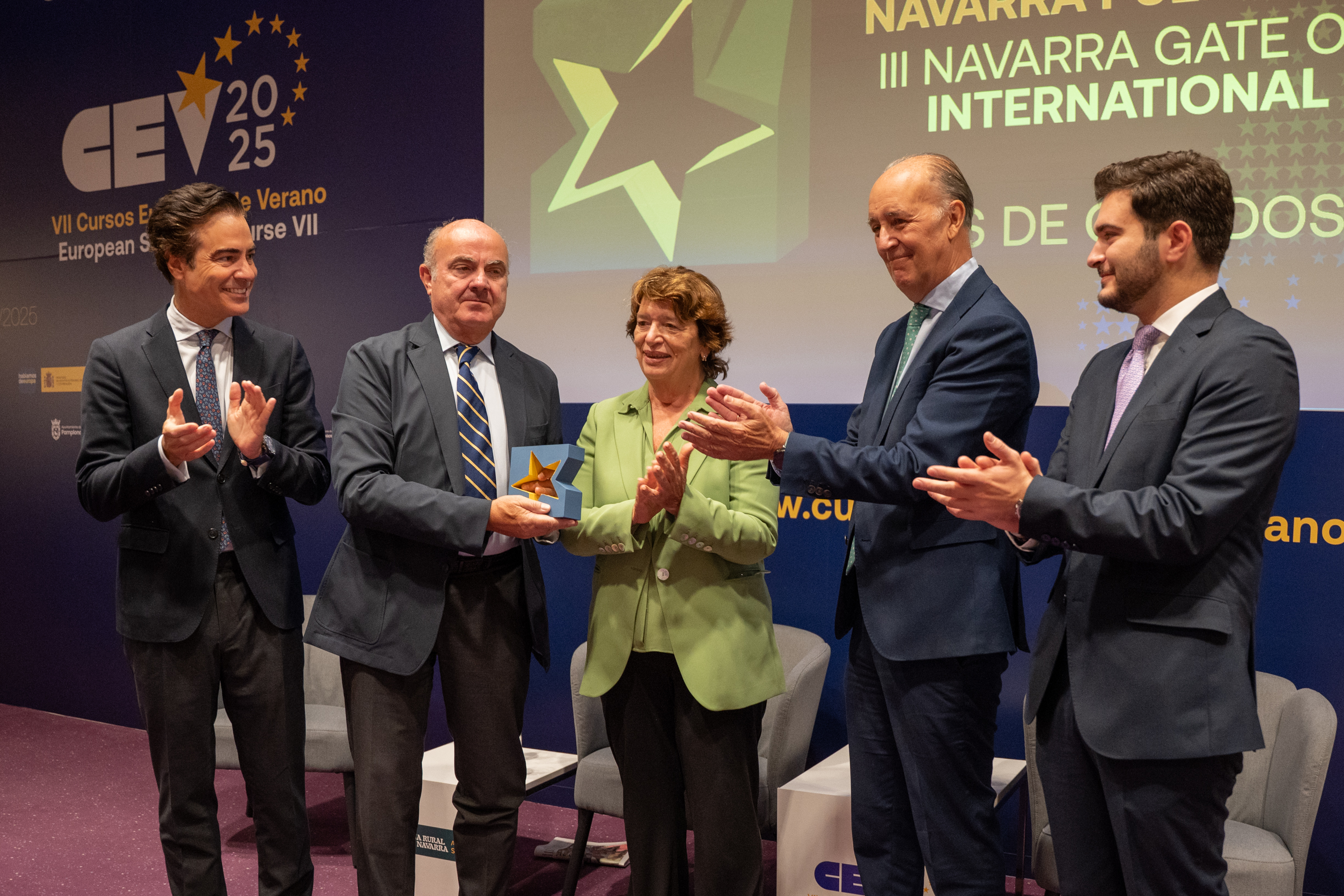ECB’s de Guindos: Risk of Undershooting Not High, Risks to Inflation Two-Sided
18 September 2025

By Marta Vilar – MADRID (Econostream) – European Central Bank Vice President Luis de Guindos said on Thursday that the risk of euro area inflation falling lastingly below target was limited and that inflation risks were two-sided.
During the Q&A session at an MNI Connect event, de Guindos noted that although inflation is expected to dip below target in early 2026, “the risk of undershooting is not big.” The ECB would look through deviations as long as they were considered transitory, he said.
He said that the ECB should first assess how tariffs affect growth, trade and inflation before drawing conclusions about such undershooting.
“In the short term, the impact [of tariffs] is going to be inflationary, but afterwards, given that tariffs will reduce demand, that will offset the inflation impact,” he added.
In the longer run, he added, tariffs would have a “negative” impact on inflation if they contributed to fragmentation.
Asked about the next move by the ECB, de Guindos said that remarks from colleagues about possible further rate cuts or hikes represented a “personal stance,” emphasizing that decisions are taken collegially.
He added that policymakers remain “open” and do not yet know whether the easing cycle has ended. Current interest rates, he said, are “the correct ones,” though that could change if circumstances shift.
De Guindos also pointed to the need to monitor the rerouting of Chinese goods to Europe, warning that deflation in China could spill over via cheaper imports.
On the exchange rate, he said the ECB would focus on its evolution rather than on specific data points that might spark concern, making clear that the institution is not targeting the currency.
Related articles:
- ECB’s de Guindos: Growth to Be Moderate, But Risks More Balanced Than Before Summer
- ECB Insight: De Guindos Gently Pushes Back on Market Certainty, Keeps Door to Cuts Ajar
- ECB’s de Guindos: Rates Appropriate for Now but Uncertainty Demands Caution
